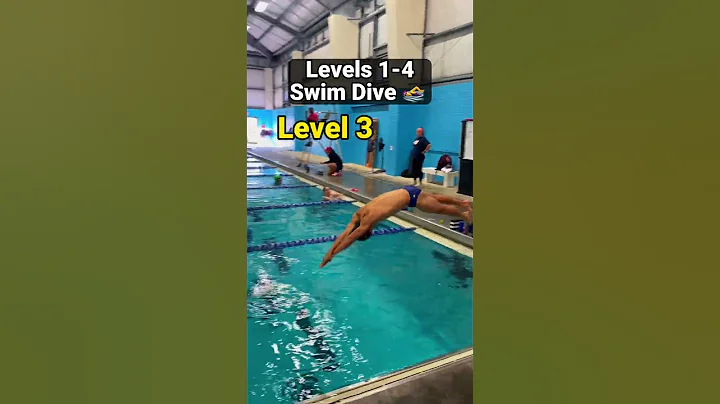
Although swimming is a good sport, it is also a risky sport. If you are not careful, a drowning death may occur. Therefore, swimming safety must be taken seriously.
Safety Points
1 Do not go swimming alone, do not swim in unknown water conditions or in dangerous places where drowning casualties are likely to occur, and do not swim in rivers, lakes, reservoirs, etc. without permission. To choose a good swimming place, you must have a clear understanding of the environment of the place. If there is a danger warning, you cannot swim here.
2 You must be aware of your physical health. People who are prone to cramps in their limbs should not participate in swimming or swim in deep water areas.
3 Don’t be too hungry or too full when swimming. Do not get into the water until one hour after a meal to avoid cramps.
4 Be prepared before going into the water. Move your body first. If the water temperature is too low, you should first rinse your body with water in shallow water, and then go into the water to swim after adapting to the water temperature. Students with dentures should remove their dentures. To prevent the dentures from falling into the esophagus or trachea when swallowing water.
5 You must be self-aware of your own water nature. Do not show off after entering the water. Do not dive or dive hastily, and do not fight with each other to avoid drinking water and drowning. Do not swim in rapids and whirlpools, and do not swim after drinking.
6 If you suddenly feel uncomfortable while swimming, such as dizziness, nausea, palpitation, shortness of breath, etc., you should immediately go ashore to rest or call for help.
7 Before diving, make sure the water is at least 3 meters deep and there are no weeds, rocks or other obstacles underwater. It is safer to enter the water feet first.
How to prevent lower limb cramps while swimming
1 Be sure to warm up before swimming.
2 You should consider your physical condition before swimming. If you are too full, too hungry or too tired, do not swim.
3 Before swimming, put some water on your limbs and then jump into the water. Don't jump into the water immediately.
4 If you have chest pain while swimming, you can press your chest hard and wait until you feel better before going ashore. If you have abdominal pain, you should go ashore. It is best to drink some hot drinks or hot soup to keep your body warm.
Self-rescue methods for swimming and drowning
How to ensure the health and safety of swimming and avoid drowning incidents? If you are not familiar with the water conditions and enter the water rashly, it can easily cause life danger. In the unfortunate event of a drowning incident, experts say that drowning victims should not panic, but should remain calm and actively rescue themselves.
Stay calm in the water and breathe in through your nose when swimming, which is most likely to cause choking. Before children enter the water, parents should explain this issue clearly to their children: if they choke on water, they must first open their mouths wide and take a deep breath. Even if they drink a few sips of water, they must open their mouths wide and not breathe through their noses.
1 Self-rescue methods for those unfamiliar with water:
In addition to calling for help, lie on your back with your head backward so that your nose can be exposed to the water for breathing. Breathe out shallowly and inhale deeply. Because when you take a deep breath, the specific gravity of the human body drops to slightly lighter than water, and you can surface. At this time, do not raise your arms and flutter around, which will make the body sink faster.
2 Self-rescue method for water cramps
The main parts of cramps are the calves and thighs, and sometimes the fingers, toes, stomach and other parts also get cramps.
1 If cramps occur while swimming, do not panic. You must stay calm, stop swimming, take a breath, float on your back, and use different methods to save yourself according to different parts.
2 If you have calf cramps due to fatigue due to low water temperature, you can put your body in a supine position. Hold the toes of the cramped leg with your hands and pull upwards to straighten the cramped leg. Use the other leg to step on the water and paddle with the other hand to help the body float. Do this several times in a row to return to normal. After landing, pinch Chengshan point or Weizhong point with the tips of your middle and index fingers for massage.
3 If you have thigh cramps, you can also use the same method of stretching the cramped muscles to solve the problem.
4 When your hands cramp, you should quickly clench your fists, then straighten them hard, repeat several times until they recover. If one hand has cramps, in addition to doing the above actions, you can massage the Hegu point, Neiguan point, Waiguan point.
5 For upper abdominal muscle cramps, you can pinch Zhongwan point (four inches above the navel), and pinch Zusanli point. You can also lie on your back in the water, bend your legs toward the abdominal wall, and then straighten them. Repeat several times.
6 After cramping, use another swimming style to swim back to the shore. If you have to use the same swimming posture, beware of another cramp.
3 Self-rescue methods for excessive fatigue
1 If you feel cold or tired, you should swim back to the shore immediately. If you are far from shore or too tired to return immediately, float on your back to conserve strength.
2 Raise one hand, relax your body, and let the other person save you. Don't hold on to your savior.
3 If no one comes, continue to float on the water and swim back to the shore when your strength recovers.
Drowning first aid
Drowning is a common accident. Drowning can cause suffocation and hypoxia. If it is combined with cardiac arrest, it is called "drowning". If the heartbeat does not stop, it is called "near drowning." This classification is important based on the condition and prognosis. The meaning is basically the same, but the treatment principles are basically the same, so they are collectively called drowning.
First aid methods are:
1 After lifting the casualty out of the water, immediately remove water, mud and dirt from the mouth and nose, wrap your fingers with gauze (handkerchief), pull the casualty's tongue out of the mouth, and unbutton and collar the casualty. , to keep the respiratory tract open, and then pick up the waist and abdomen of the wounded person, with his back facing up and his head drooping, to pour water. Or pick up the legs of the injured person, put his abdomen on the shoulders of the first responder, and run quickly to pour out the accumulated water. Or the first-aider can take a half-kneeling position, place the injured person's abdomen on the first-aider's legs, make his head droop, and use his hands to flatten his back to pour water.
2 Those who have stopped breathing should immediately perform artificial respiration. Generally, mouth-to-mouth blowing is best. The first responder is located on the side of the casualty, holds the casualty's chin, pinches the casualty's nostrils, takes a deep breath, and slowly blows into the casualty's mouth. When the chest is slightly lifted, relax the nostrils and press the chest with one hand. To aid exhalation. Repeat and rhythmically (blow 16 to 20 times per minute) until breathing is restored.
3 People with cardiac arrest should undergo external chest cardiac massage first. Let the injured person lie on his back, with a hard board on his back, his head lowered and later raised. The first-aider is on the side of the injured person, facing the injured person, with his right palm flat on the lower part of his sternum, his left hand on the back of his right hand, and using the first-aider's body weight to slowly Use force, but not too much force to prevent fracture. Press the sternum down about 4 centimeters, then release the wrist (without leaving the hand from the sternum) to restore the sternum. Repeat this rhythmically (60 to 80 times per minute) until the heartbeat recovers. .
—— END——
(please indicate the source for reprinting)
Wang Yingjie/produced
(content synthesized from the Internet)






















